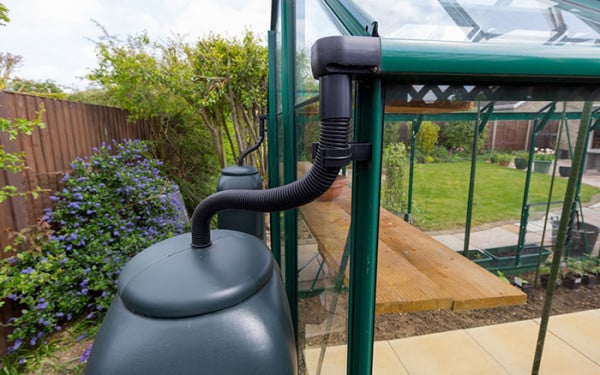Read my article about how to garden sustainably by saving water and composting, originally published in The Daily Express.
Minimise waste in your garden and make the most of what nature has to offer. Making changes in your garden to garden more sustainably will help you to get the most out of your space. It can also save you money and help you to grow bigger and better plants too.
Water works
Fitting a water butt, in your garden is a great way of collecting rainwater. Around 205 billion litres of water are used outdoors every year, most of that in our gardens. So, switching from relying on mains means you’re saving water and saving money. Water tanks are most commonly made from plastic, but they can be made from steel, concrete or even upcycled whiskey barrels.
Opaque materials are used so that sunlight can’t get to the water which decreases the chance of algae. Covering the top of the containers also means that insects, debris, and animals can’t get in either.
When choosing the best place to position the tank, it’ll need to connect to a downpipe so there is an easy flow of water straight. These can be situated at the rear of your home, the garage, greenhouse or shed. One of my top tips is to cover the end of the drainpipe with a pair of old tights or stockings to act as a filter. This prevents debris like fallen leaves from getting into the container. Clear out the tights regularly to stop a build-up of materials.

Goodness for the garden
By producing your own compost, less household waste is going to landfill – instead it’s getting back into the soil quicker. Microorganisms such as bacteria, actinomycetes and fungi work alongside the worms to break down the organic compounds. They consume the organic material for energy, breaking down complex structures to simpler elements.
It’s ideal to place compost bins on soil without a base which helps drainage, as well as increasing access to soil organisms which helps the process. Plastic composters are handy because they have a convenient hatch at the top to add new materials, and a hatch for easy removal of compost. Alternatively, making a compost heap from wooden pallets is a good DIY project if you have a lot of garden waste and a large space.
In the mix, it’s vital to get the right balance of green and brown materials. Green materials are those that are high in nitrogen and quick to rot such as fruit and veg peelings and grass cuttings. Brown materials are high in carbon, for example straw, hay, and cardboard. There should be around half and half of each, however if the mixture seems too wet and smells, add more brown material to help balance it out. On the other hand, if the materials are all woody and dry, adding more green materials will boost the process.
It can take anywhere between 3 months to a few years for compost to be ready. You’ll be able to tell when it’s got a crumbly consistency and is dark brown in colour with an earthy smell. When it’s ready, adding compost to your garden will improve soil by returning organic matter, whilst also improving drainage and water retention.


Leave A Comment